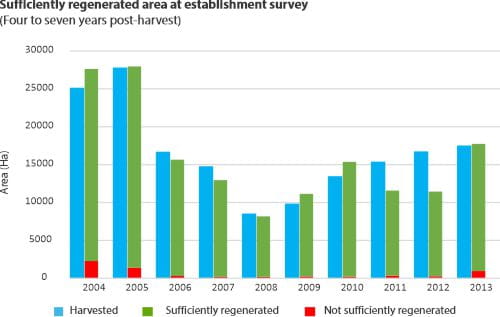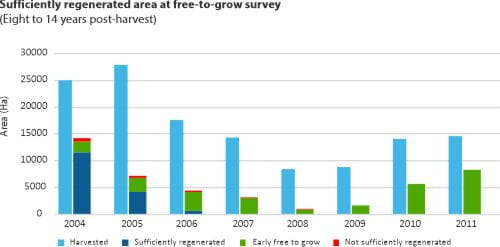
Why we measure this
An important indicator of long-term forest productivity and sustainable forest management practices is the area of harvested forest land sufficiently regenerated according to a measurable standard. Forests that are successfully regenerated are essential to a long-term sustainable flow of wood products and ecosystem productivity. They are also an important indicator of anticipated long-term forest productivity and sustainable forest management practices.
What is happening

The harvested area does not always match the area surveyed by year of harvest because of the changing sources of the harvest and survey data. The area harvested and surveyed is reported by industry within 18 months of the activity being completed. While every effort is made to ensure data sets are correct at the time of reporting, there can be discrepancies. The reporting time period includes the harvest/fiscal years 2004-05 to 2013-14, as this is the most up-to-date regeneration survey data available from industry.
The establishment survey results demonstrate the forest industry is renewing harvested areas in a timely manner and within acceptable growth standards to meet future forest conditions. The amount of area reported as not sufficiently regenerated (NSR) at establishment for the reported time period is four per cent.


What we are doing
Every major licensee (forest management agreement and area-based term supply licence holders) that harvests forest products in the province has a legal obligation to ensure that the licence area has also been renewed.
The Forest Regeneration Assessment Standard applies to blocks harvested after 2004 and provides assurance that the achievement of the desired forest condition is likely. There are two timeframes when regeneration is assessed:
- Establishment: four to seven years post-harvest; and
- Free-to-grow: eight to 14 years post-harvest.




